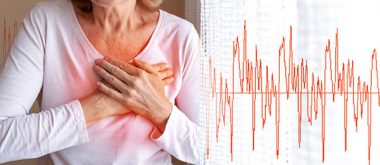Takotsubo cardiomyopathy, also known as broken heart syndrome, is associated with high mortality and complication rates, which remained unchanged between 2016 and 2020, according to a new study published in the Journal of the American Heart Association, a free, peer-reviewed journal of the American Heart Association.
Extensive Study on Broken Heart Syndrome
Takotsubo cardiomyopathy is a stress-related heart condition in which part of the heart temporarily enlarges and stops pumping properly. It is believed to be a response to a surge in stress hormones that can be triggered by an emotionally or physically stressful event, such as the death of a loved one or divorce. It can lead to severe, short-term heart failure and can be fatal. Takotsubo cardiomyopathy can be misdiagnosed as a heart attack due to similar symptoms and test results.
This study is one 
Twice as High Mortality Rate in Men, Highest Incidence Rates in People Over 61
The researchers evaluated health data from the Nationwide Inpatient Sample database to identify individuals diagnosed with Takotsubo cardiomyopathy between 2016 and 2020.
The analysis found:
- The mortality rate was classified as high at 6.5% and showed no improvement over the entire period.
- Mortality was more than twice as high in men (11.2%) as in women (5.5%).
- Serious complications included heart failure (35.9%), atrial fibrillation (20.7%), cardiogenic shock (6.6%), stroke (5.3%), and cardiac arrest (3.4%).
- People over the age of 61 had the highest incidence rates of Takotsubo cardiomyopathy. However, the incidence of this disease was 2.6 to 3.25 times higher in adults aged 46 to 60 compared to those aged 31 to 45 during the study period.
- White adults had the highest rate of Takotsubo cardiomyopathy (0.16%), followed by Native Americans (0.13%) and black adults (0.07%).
It is Important to Distinguish Between Heart Attack/Chest Pain and Takotsubo Cardiomyopathy
In addition, socioeconomic factors such as median household income, hospital size, and health insurance status varied considerably. “Takotsubo cardiomyopathy is a serious condition with a significant risk of death and serious complications,” said Movahed. Medical staff must carefully review coronary angiograms that do not show significant coronary artery disease with classic signs of left ventricular motion, as this may indicate a subtype of stress-induced cardiomyopathy. These patients should be monitored for serious complications and treated promptly. Some complications, such as embolic stroke, may be prevented by early administration of anticoagulant medication in patients with significantly weakened heart muscle or with an irregular heart rhythm called atrial fibrillation, which increases the risk of stroke.
He also noted that age-related findings could serve as a useful diagnostic tool to distinguish between heart attack/chest pain and takotsubo cardiomyopathy, which could lead to earlier diagnosis of the condition and also refute the assumption that takotsubo cardiomyopathy only occurs in older people. Limitations of the study include that it relies on hospital coding data, which may contain errors or double-count patients who were hospitalized more than once or transferred to another hospital. In addition, no information was available on outpatient data, different types of takotsubo cardiomyopathy, or other conditions that may have contributed to the patients’ deaths. The researchers note that further research is needed on the treatment of patients with Takotsubo cardiomyopathy and on the reasons for the different mortality rates in men and women.





